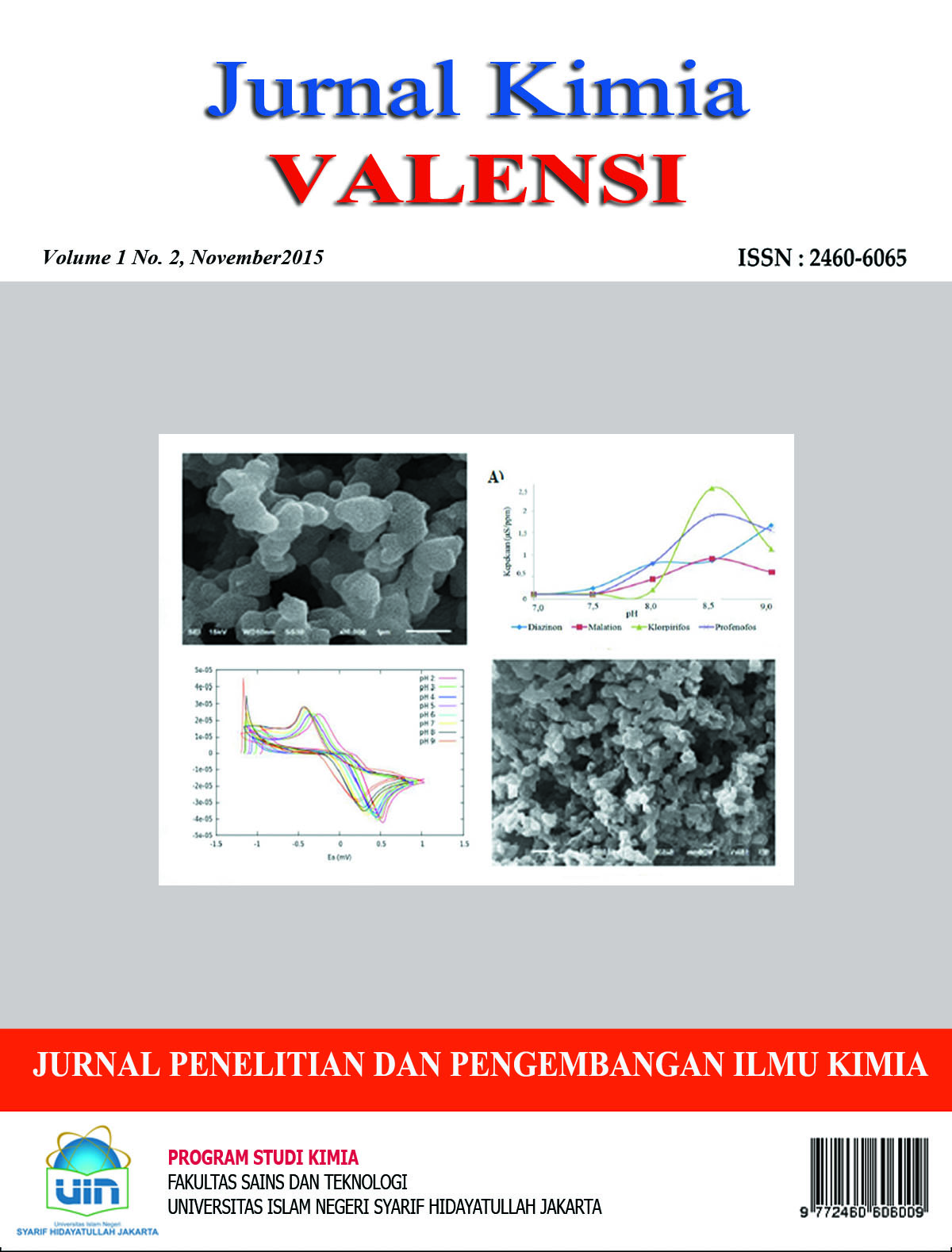Kinerja Biosensor Konduktometri Berbasis (Screen Printed Carbon Electrode) SPCE––Kitosan untuk Deteksi Diazinon, Malation, Klorpirifos dan Profenofos
DOI:
https://doi.org/10.15408/jkv.v0i0.3156Keywords:
Conductometric biosensor, organophosphate pesticide, organofosfat hydrolase, SPCE (screen printed carbon electrode)Abstract
The performance of biosensor is based on the hydrolysis reaction of organophosphorus compounds catalyzed by organophosphate hydrolase (OPH), produce H+ and the other ionic species that increase conductance on the surface of electrode. In this research, OPH was immobilized by crosslinking on chitosan–glutaraldehyde membrane on the (Screen Printed Carbon Electrode) SPCE surface. Measurements were carried out at the range concentration 0 to 3.0 ppm of organophosphate, the range of pH 7.0 to 9.0 and 5–25 mL of enzyme. The result showed that optimum performances were obtained at 25 mL of OPH, pH 8.5, with the sensitivity for dizinon, malathion, chlorpirifos and profenofos is 1.353 mS/ppm, 1.270 mS/ppm, 1.230 mS/ppm dan 1.77 mS/ppm respectively and 0.97; 1.03; 0.98; 0.97 of LOD.
Downloads
References
Aubert SD, Li Y, Raushel FM. 2004. Mechanism for the hydrolysis of organophosphates by the bacterial phosphotriesterase†. Biochemistry. 43(19): 5707.
Efremenko EN, VS Sergeeva. 2001. Organophosphate hydrolase –an enzyme catalyzing degradation of phosphorus-containing toxin and pesticides. Russian Chemical Bulletin International Edition. 50 (10): 1863.
Gahlaut A, Gothwal A, Chhillar AK, Hooda V. 2012. Electrochemical biosensors for determination of organophosphorus compounds: Review. Journal of Applied Biosensor. 1(1): 1.
Jaffrezic-Renault N, Dzyadevych SV. 2008. Review: Conductometric microbiosensors for environmental monitoring. Sensors.8: 2569.
Lewis VE, Donarski WJ, Wild KR, Raushel FM. 1998. Mechanism and stereochemical course at phosphorus of the reaction catalyzed by a bacterial phosphotriesterase. Biochemistry. 27(5): 1591.
Milani MM, Lotfi AS, Mohsenifar A, Mikaili P, Kamelipour N, Dehghan J. 2015. Enhancing organophosphorus hydrolase stability by immobilization on chitosan beads containing glutaraldehyde. Research Journal of Environmental Toxicology. 9(34): 34.
Mostafa GAE. 2010. Electrochemical biosensors for the detection of pesticides. Electrochemistry Journal. 2: 22.
Paliwal S, Dessertation. 2008. Development of enzyme based biosensor for the detection of organophosphate neurotoxins. [Dissertation]. Auburn (1): Faculty of Sciences Auburn University.
Silva NAD, Birolli WG, Seleghim MHR, Porto ALM. 2013. Applied bioremediation-active and passive approaches. Rijeka. (385): InTech.
Votchitseva YA, Efremenko EN, Aliev TK, Varfolomeyev SD. 2006. Properties of hexahistidine-tagged organophosphate hydrolase. Biochemistry Mosc. 71(7):167.
Wardani KK, Wijaya SW, Prasetyawan S, Mahdi C, Roosdiana A. 2014. Karakterisasi enzim organofosfat hidrolase (OPH) dari pseudomonas putida pada substrat diazinon, malation, klorpirifos dan profenofos. Jurnal Ilmu Kimia Universitas Brawijaya. 2(1): 365.





